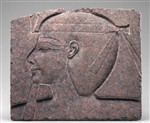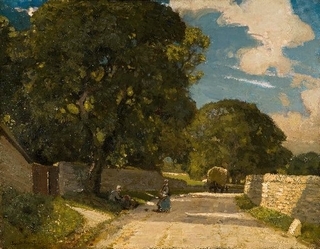 Ever walk through a museum and see a painting that just doesn’t look right? I have, and it always raises questions in my mind. Is the painting a fake? Is it my eye? Has the museum been tricked, or has it simply not bothered to check on a painting that was, perhaps, donated? Once, when I mentioned a particular work in one American museum to an expert on the artist, he speculated that the work had been donated and that the museum did not want to offend the donor by investigating authenticity.
Ever walk through a museum and see a painting that just doesn’t look right? I have, and it always raises questions in my mind. Is the painting a fake? Is it my eye? Has the museum been tricked, or has it simply not bothered to check on a painting that was, perhaps, donated? Once, when I mentioned a particular work in one American museum to an expert on the artist, he speculated that the work had been donated and that the museum did not want to offend the donor by investigating authenticity.
If so — and I have absolutely no proof that it is — that’s a sad tale.
So I commend the Detroit Institute of Arts, which today opened Fakes, Forgeries and Mysteries, joining the other museums that have come clean on mistakes in their collecting (the Metropolitan’s Rembrandt, Not Rembrandt of a few years back comes immediately to mind, but there are others).
 DIA’s exhibition assesses about 50 paintings, sculptures, photographs, prints, drawings and decorative arts from throughout its collections in European, African, American, Asian, Islamic and Ancient Near Eastern. It explores attribution, authenticity, and other research mysteries.
DIA’s exhibition assesses about 50 paintings, sculptures, photographs, prints, drawings and decorative arts from throughout its collections in European, African, American, Asian, Islamic and Ancient Near Eastern. It explores attribution, authenticity, and other research mysteries.
That little head above, for example, is now described:
Head of a King, about 1925, granite. Formerly by unknown artist, Egyptian, either Saite period, 664-525 B.C.E., or New Kingdom, 1570-1085 B.C.E. Currently by Oxan Aslanian “The Master of Berlin” (German, 1887-1968). Collection of the Detroit Institute of Arts
Quite a difference!
In today’s Detroit Free Press, critic Mark Stryker tells the tale of another work in the exhibit, Tewkesbury Road (above), which came to DIA in 2004 as a Monet, with his signature and the date 1871, when Monet was indeed living in England. The pigment and canvas are consistent the period and the painter.
But DIA curator Salvador Salort-Pons tracked the painting, discovering that it listed in a catalogue as by Alfred East.
And then he found the smoking gun: a photo of the painting with East’s signature visible. So, sometime between 1910 and 1947, a crook — sharp enough to know that Monet was in England in 1871 — removed East’s signature, forged Monet’s signature and invented a provenance to throw skeptics off the scent.
Here’s the link to Stryker’s story, which has more examples.
For families, Fakes, Forgeries, and Mysteries also includes:
a hands-on lab with interactive activities and opportunities for discovery. Kids will enjoy using clues and magnifying glasses to try their hand at solving mysteries. Visitors can also conduct their own investigations using pigment analysis, dendrochronology (using tree rings to date wood), and x-ray images, giving them a real sense of what goes on behind the scenes.
These kinds of exhibitions can be exemplary on many levels: I hope the execution is as good as the concept, though that’s something I can’t tell from afar.
Photo Credits: Courtesy of the Detroit Institute of Art
